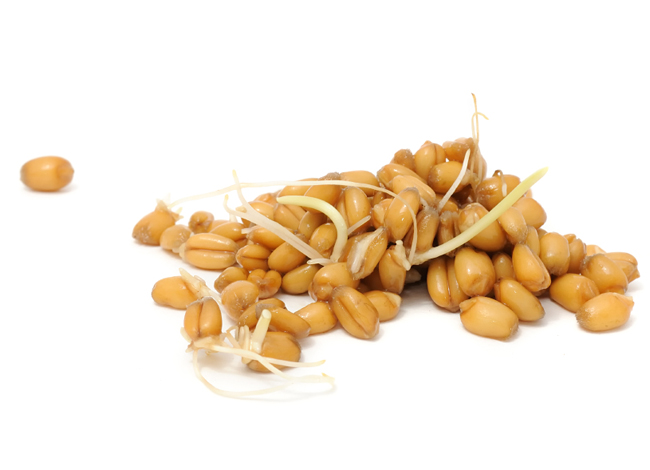Lets be honest. One of the reasons a good cold winter can be fantastic, is knowing that it wont last forever. Its the guarantee that spring will come that keeps us going, and the thought of once again being able to go outside without three layers of clothes that makes it all enjoyable.
(Full disclosure: Im from Scandinavia, working at Oldways this winter as an intern, and even my feet are cold!)
So in a humble attempt to hurry spring along, I started looking into something that will bring thoughts of spring into the kitchen. Sprouted whole grain flour was the answer, since it evokes images of seeds turning into new plants signifying that spring is on the way! The very healthy trend of sprouting and using sprouted products is a great way to invite spring in, even though a quick look outside will confirm that it might NOT be right around the corner.
Sprouted grains something almost unheard of a few years ago are now increasingly popular. People are even sprouting at home, creating life from inert seeds, using beans, wheat, quinoa and even rice. This article in the Chicago Tribune may give you some ideas. You can also browse our sprouted grains feature on the Whole Grains Council website to learn more.
Using sprouted flour is actually an original way of baking, in line with the old ways we like to promote. Before the 20th century and the invention of the eficient combine harvester, grains often sprouted naturally before they could be processed and turned into flour. This would cause the flour to have higher nutrient levels, making baked goods, pastas and other grain products healthier.
Of course, whole grains are already super-healthy, and should be part of your daily diet, but by using sprouted our or products made from it, you can add a whole new level of health to your whole grain consumption. Research on the Whole Grains Council website shows that sprouting grains can increase B vitamins, vitamin C, beta-carotene, fiber and folate, while decreasing gluten and phytates. The sprouted products also contain numerous beneficial enzymes that have a positive effect on digestion in some individuals. All this, and they taste great too!
If you want to start baking with sprouted flour its quite easy to get started. In most recipes you can replace your whole grain our 1:1 with sprouted flour without any fuss. You can browse around our recipe collections on the Oldways and Whole Grains Council sites or try one of my favorites from Italy, a place where springtime is already well on its way.
Biscotti de prato (with a nutty twist)
recipe by Chef Anders Nicolajsen
Ingredients:
½ cup chopped or sliced almonds, walnuts, hazelnuts or a mixture
1 teaspoon lemon zest
2 large eggs (preferably organic)
½ cup sugar
a pinch of sea salt
1 vanilla bean, split and scraped (or 1 teaspoon vanilla extract)
1 cup sprouted whole grain flour
1 teaspoon baking powder
Directions:
Preheat the oven to 325°F
Lightly roast the nuts until golden.
Separate the egg yokes from the whites.
Whisk yokes with sugar and vanilla, till creamy.
Whisk egg whites still, and fold them into the yokes. Add flour, lemon, and baking powder. Mix it nice and easy to keep as much air as possible in there.
Roll the dough with your hands to form a rope, about as wide as two thumbs, to make nice bite-size biscotti.
Bake the rope whole for 20 to 25 minutes then quickly cut it into slices about ½ inch (or about 1 cm) thick, as soon as it comes out of the oven.
Place the cut biscotti on a rack, and bake them once more at 300°F for about 10 to 15 minutes or until they harden and become crispy.
Are you an experienced sprouted flour baker, or do you have any beginners experiences to share Or are you looking for ideas of where to and sprouted flour We invite you to share your insights and questions with us.
– Anders







Leave a comment